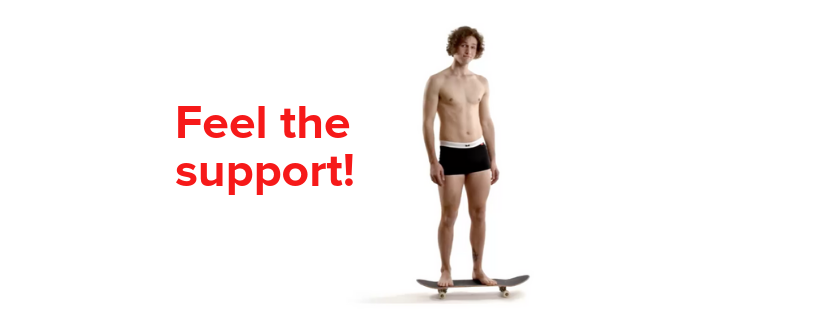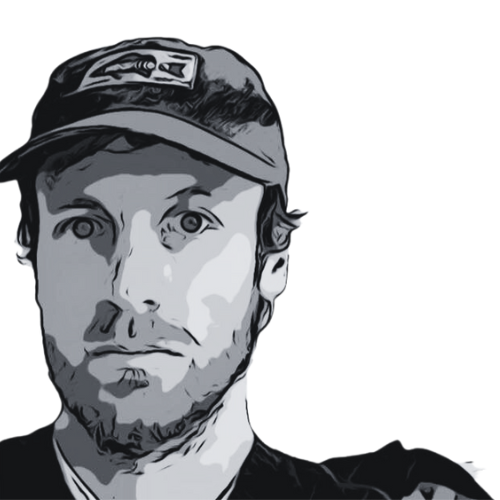What I learned about building an e-commerce brand
Marketing is easy, right?
I thought I had a solid idea, and to tell you the truth, I thought building a business was going to take care of itself. The idea was subscription underwear for men – sign up and you’ll never have to shop for underwear again. Make the undies comfy, build a website and the price point compelling, and why wouldn’t people buy? Plus, you know…marketing is easy (that’s what I thought – I don’t think that now).
In the simplest form, it sounds easy – all you need is a great product, and a great brand. The tricky part is achieving both of those things. Here are some lessons that I hope you can learn from when you are starting an online brand.
The brand was Junkmail Undies
Junkmail sold men’s undies by subscription. They were stock-standard block colour undies with a white band, and a discreet logo at the front. The idea was to target busy men that ended up wearing undies with holes in them because they don’t have time to go to the shop (or they can’t be bothered). It started as a side business and progressed to a business I raised two rounds of funding for and operated full-time with multiple functions.

I did some good things like donate over 1,500 pairs of new underwear to homeless men throughout Australia and created some advertising campaigns that received positive feedback in the press here, here and here.
I also did some things that weren’t as good such as waste money on advertising campaigns that weren’t thought out, and had a broken checkout on the website when Vance Joy posted a photo on Instagram wearing our undies (damn).

Here are some things I’d do differently:
“If you say three things, you don’t say anything”
I can’t tell you how many books I read that discuss this message (Ogilvy on Advertising, Scientific Advertising, Reality in Advertising were the best), and still managed to mess this up. The quote, by the way, is from a book called Made To Stick by Chip and Dan Heath which I also recommend.
Because you live in your business and think about it 16 – 24 hours a day, every day, it can often feel like you’re not achieving what you want to achieve. Remember that your audience doesn’t really care about you and think about you all day (no offence, it’s just there are a lot of brands out there).
So you plan some ads, think of some great messaging and after three weeks, you’re not selling like you expected. You question every single thing about the ads you’ve created and decide because the sales aren’t coming through, something needs to change. So you try something radically new which will definitely work.
Time to remember: most people don’t care about your brand, and it takes time to reach a broad audience. So while you’re getting sick of the ads, 99% of your intended audience haven’t seen it, or have maybe seen them once. Be patient and back in the messaging that you’ve tested and planned.
As the brand grows and is established, you can start talking about other selling points to the brand. Nail the first message, and in time, you can start talking about other things.
Build an audience with patience
As much as you like to think you’ll be the next Dollar Shave Club who released a video and sold hundreds of millions of shavers from that video, I can say with a confidence level of 99.99%, you won’t. Building a brand is as much about patience and consistency as anything else, and digital marketing these days makes this point even more relevant.
Selling to someone who has never heard of your brand is incredibly difficult and is not a tactic for long-term success. You need to capture an audience’s attention, and continue to deliver interesting content to that audience week-in, week-out. Once you’ve gained that trust, you can then start selling to them.
A strong focus in the early days should be setting up good marketing funnels, so people are introduced to your brand with awareness messages and you only sell to them once they are ‘warm.’ This is a full topic in itself, so if it doesn’t make sense, I recommend these courses to educate you:
- Zambesi with Koala;
- Foxwell Digital;
- E-Commerce Influence Podcast (there are a lot of episodes that do the basics well).
Understand who your audience is, and where they hang out
Again, this is something I read a million times and didn’t follow through on. If you try to market to everyone, no one will hear it.
Before you launch a brand, think of who your target customer is and write down a detailed explanation of them – what they like, where they hang out, what motivates them.
It is ideal if you can come up with an exact description of this person that you drill to memory. For example, our target customer would be a 32 year-old guy who works to live rather than lives to work. He would go to the pub on a Saturday arvo to watch the footy with his mates and almost always drink Carlton Draught. He goes shopping once a year for clothes, and buys enough to get him through the next year.
Test, test, test. Plan, plan, plan
Advertising campaigns and videos are not easy and bloody expensive. But to be a brand that grows quickly, you will have to drop some money on them at some stage.
Before spending all this money though, spend a lot of your time testing and planning. Research how other brands have done it, put up various ads on Facebook and split test them, ask friends, speak to strangers – just anything that will help you decide on what to create. (Send ’em my way if needed…always happy to look at new ads).
Then you need to take time planning the video / photoshoot down to the most infinitesimal detail. You’ll end up with something that you’re proud to show people, which is good because hopefully you will be showing A LOT of people.
Side note: you’ll end up with a lot of content that you’re happy with from this shoot. You can then edit, and re-edit it to test different iterations of it. The more good content you have, the longer it will last.
Don’t outsource to an agency
You can try and justify why an agency would be a good idea to get your product out there, but the only realistic reason I can see for using one early on in your business is laziness. And don’t feel bad if you have, I used a few.
Deep down, the reason was I was lazy and thought that ‘professionals’ would solve the issue of not selling enough. The truth is the agency model is to get as many customers in as possible. They will care about your business approximately 0.0001% as much as you. It frustrates you, and you in turn frustrate them – a nasty cycle.
PR is good to show off to your parents, friends and investors – it’s not the ‘magic hit’ you might think it will be
Getting printed in the newspaper, or an online blog will make you look great and give you something to show off. It won’t be a magic bullet that increases your sales a hundred times.
We managed to get some really good press at times, and all it did was lead to more LinkedIn invitations from advertisers asking how I was planning to spend our money. It did lead to a small increase in web traffic and sales, but don’t expect that one mention anywhere is going to send you off to the moon.
Product over everything
I mentioned this in my post about what I learned starting my first business, but make your product better than anything else out there. Find the most important selling point of your product, and focus all your efforts on becoming the best in that area. Your marketing efforts will thank you.
Improve your brand by 1% each day
This is one of the greatest life lessons I’ve come across, and it can very easily transition to your brand. Just make your brand better by 1% each day, whether that’s improving an email, fixing something on your website that will make more customers convert or pitching your business to strangers. Write down what you plan to do at the start of the day, and write down how you made the business 1% better at the end of the day.
Within 6-12 months, you’ll have something pretty spectacular. Good luck and reach out to me if you’ve got any questions!
